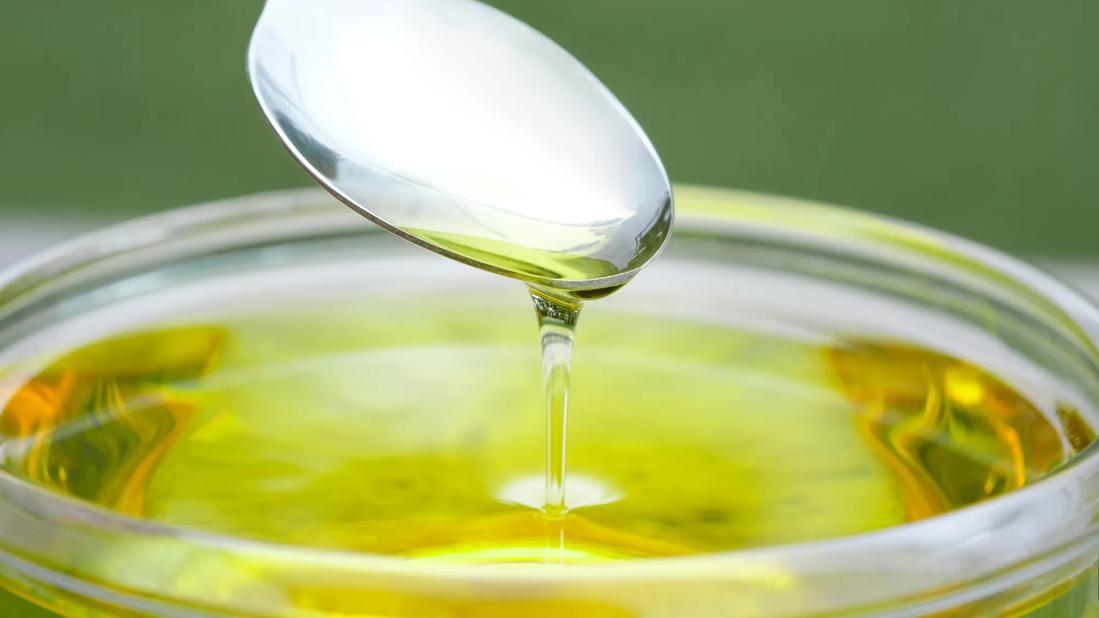Is Oil Pulling Good for You?
This supposed oral health practice doesn’t have proven benefits, and it’s not a substitute for brushing and flossing

With endorsements from celebrities and influencers, you might be tempted to try oil pulling. This age-old Indian folk practice has gained attention in wellness circles in recent years, with proponents claiming that it can reduce plaque, whiten teeth and benefit your overall oral health.
But can it really live up to these claims? (Spoiler: no).
Dentist Anne Clemons, DMD, gives us the lowdown.
What is oil pulling?
“Oil pulling is when you put about a tablespoon of edible oil in your mouth and then swish it around for a certain period of time,” Dr. Clemons explains. “That amount of time can vary up to 20 minutes.”
The traditional Ayurvedic method calls for using sesame oil, but modern-day proponents of oil pulling often use coconut oil, sunflower oil or even olive oil. After you’ve swished the oil around in your mouth, you spit it out, brush your teeth and go about your day.
But … why do people do oil pulling at all?
For centuries, people believed this practice could prevent tooth decay, bad breath, bleeding gums, dry throat and cracked lips. Today, enthusiastic proponents claim it can do all that and more.
But the evidence-based bottom line is this: Oil pulling doesn’t have big benefits, and it’s certainly not a substitute for regular brushing and flossing.
Are there benefits to oil pulling?
The American Dental Association (ADA) doesn’t recommend oil pulling, citing a lack of evidence that it has any benefits.
“There’s no evidence that oil pulling is effective or that it will make any noticeable difference in oral health,” Dr. Clemons confirms.
Though there are a number of studies on this practice, they’re small and don’t provide enough data to prove significant benefits. The studies have looked into whether oil pulling can:
- Reduce harmful bacteria in the mouth
- Prevent plaque from forming on teeth
- Reduce bad breath (halitosis)
These studies aren’t conclusive enough to show that oil pulling is a worthwhile practice.
What oil pulling can’t do
Oil pulling isn’t a remedy for cavities, as some advocates claim.
“You can’t fix a hole in your tooth using DIY home methods,” Dr. Clemons states. “For that, you’ll need to see a dentist. There’s no other way.”
Here’s what else oil pulling won’t do: It can’t whiten your teeth, clear your sinuses, clear your acne, ease your migraines or relieve your hangovers — which are all claims that some fans of the practice have made.
“There is no research that supports any of these health claims,” Dr. Clemons reiterates.
How to oil pull
Though oil pulling hasn’t been proven to have benefits, Dr. Clemons says it hasn’t been found to be harmful either. That means that if you want to, it’s OK to incorporate it into your overall oral hygiene routine — but only if it’s done along with brushing and flossing.
If you want to give oil pulling a try, here’s how to do it:
- Prep your oil.Measure out approximately 1 tablespoon of edible oil. (Many people prefer coconut oil for its pleasant taste, but any of the aforementioned oils will do.)
- Swish it around in your mouth. Don’t swallow any of the oil. Just move it around in your mouth, as you would a traditional mouthwash.
- Keep swishing! Some recommendations call for a few minutes of swishing, while others suggest up to 20 minutes. Set a timer to tell you when you’re done.
- Spit the oil into your trash can. When you spit the oil out, it will look thin, white and a little foamy. Remember not to spit oil into the sink or toilet, which can damage your pipes.
- Brush your teeth.When you’re done oil pulling, rinse your mouth out with water and bust out the toothbrush. (Psst: Make sure you know the right way to brush your teeth!)
Should you try oil pulling?
If you’re trying to decide whether to add oil pulling to your daily oral hygiene routine, ask yourself this question: Am I already doing the basics? You should be brushing with fluoride toothpaste at least twice a day for two minutes, as well as flossing one to two times every day.
“These practices are the foundation of good dental hygiene,” Dr. Clemons says. “If you’re not flossing every day, establish that habit before turning to oil pulling as an add-on.”
Plus, be honest with yourself: Do you have an extra 20 minutes to spare every day? After brushing your teeth for two solid minutes (and flossing for another couple after that), it may not be realistic to extend your oral care routine by another 20 minutes.
Long story short: If oil pulling makes you happy, pull away! It’s not going to hurt you. But there’s really no need either. Feel free to reclaim those 20 minutes … and don’t forget to floss!